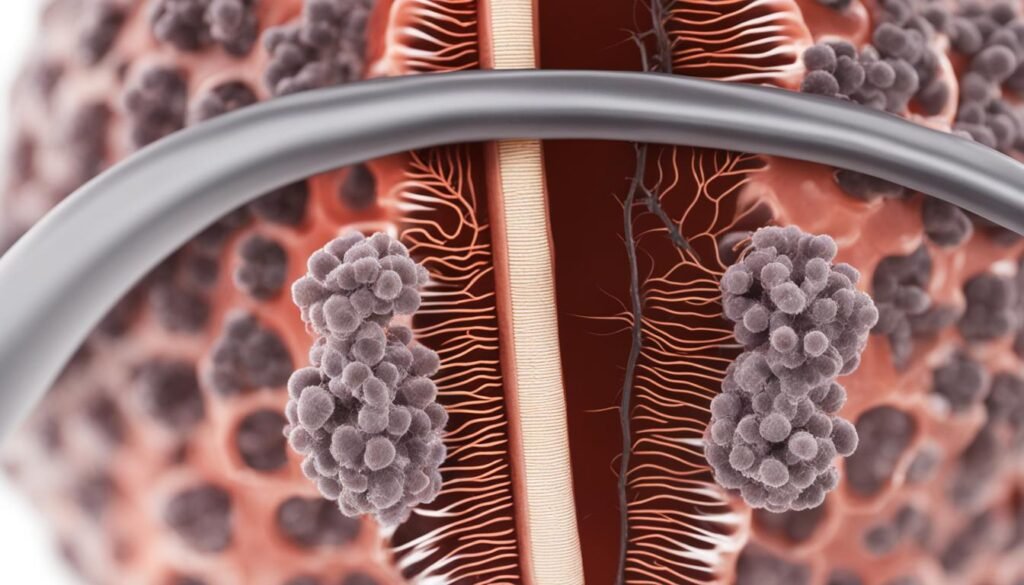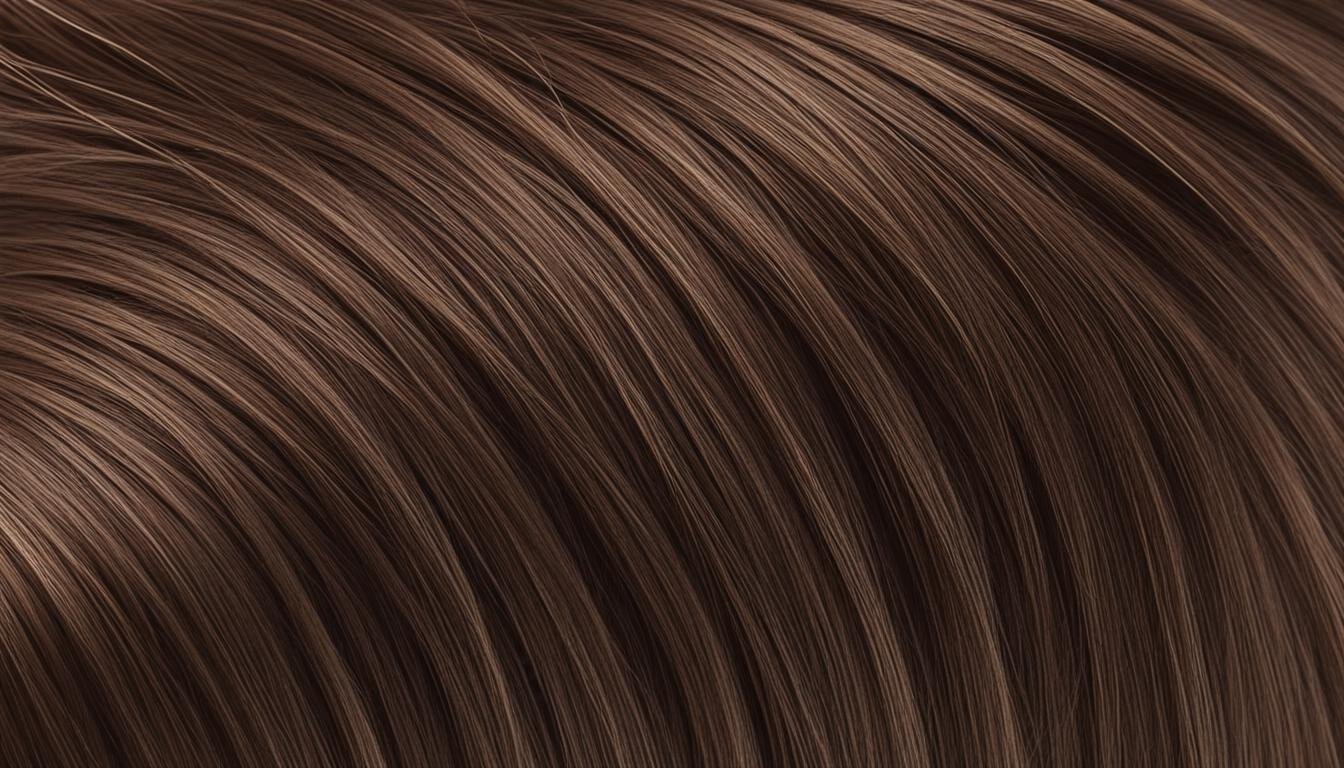A club hair is a natural part of the hair growth cycle, with its own distinct characteristics and function. Understanding what a club hair is and how it relates to the growth of your hair can help you maintain healthy locks and identify any potential issues. Let’s explore the definition, function, and growth cycle of club hairs.
During the hair growth cycle, which consists of three phases— anagen (growth phase), catagen (transition phase), and telogen (resting phase)— club hairs form in the telogen phase. This is when hair follicles become dormant and stop growing. A club hair develops with a bulb of keratin at the root, distinguishing it from other hairs. These hairs remain in the follicle until they are shed naturally, with new strands of hair replacing them.
Identifying a club hair is relatively simple. They can be recognized by the bulb at the root, which is often lighter in color compared to the rest of the hair. Additionally, club hairs are full in length, making them noticeable when shed during washing, styling, or daily activities.
Now that we have covered the basics of what a club hair is, let’s dive deeper into its function, the causes behind its occurrence, and how it relates to various medical conditions. Understanding these factors will help you navigate hair health and seek appropriate treatments if needed.
How to Find a Club Hair
In order to identify a club hair, it is important to examine shed hairs. Club hairs can be distinguished from other types of hair by the presence of a bulb at the root. This bulb is often lighter in color compared to the rest of the hair shaft.
When searching for club hairs, it is crucial to be able to differentiate them from breakage. Breakage may appear as shorter strands and lacks the distinct bulb at the root that characterizes club hairs. By understanding these differences, you can accurately identify and track the presence of club hairs.
Club hairs are typically shed during activities such as washing and styling. It is common to find full-length club hairs on pillows, in shower drains, and in hairbrushes. Monitoring these areas can help you keep track of the presence and rate of shedding club hairs.
Here is an example of how club hairs can be identified:
| Characteristic | Club Hair | Breakage |
|---|---|---|
| Bulb at Root | Present | Absent |
| Hair Length | Full-length | Shorter |
| Color | Lighter at the root | No significant difference |
By observing these distinguishing characteristics, you will be able to confidently identify club hairs and distinguish them from breakage. This knowledge can help you in monitoring hair health and identifying any potential underlying issues.
Causes of Club Hair
Club hairs, also known as telogen hairs, occur when hair follicles reach the end stage of the growth cycle and become dormant. This natural process is influenced by various factors, including:
- Lack of blood flow to the hair follicles: Adequate blood flow plays a crucial role in providing necessary nutrients to the hair follicles for optimal growth. When blood flow is compromised, such as in cases of poor circulation or vascular conditions, hair follicles may enter a dormant phase, leading to the development of club hairs.
- Scalp massage: Massaging the scalp can enhance blood circulation to the hair follicles. This increased blood flow helps deliver essential nutrients and oxygen, promoting healthy hair growth and reducing the occurrence of club hairs. Consider incorporating regular scalp massages into your hair care routine.
- Medical conditions: Several underlying medical conditions can contribute to the formation of club hairs. These include:
- Hyperthyroidism and hypothyroidism: Imbalances in thyroid hormone levels can disrupt the normal hair growth cycle, leading to hair follicle dormancy and the production of club hairs.
- Iron deficiency anemia: Inadequate iron levels in the body can impair the delivery of oxygen and nutrients to the hair follicles, resulting in the development of club hairs.
- Infection: Certain scalp infections, such as folliculitis or ringworm, can cause inflammation and damage to the hair follicles, leading to the formation of club hairs.
- Childbirth: Hormonal changes during pregnancy and postpartum can trigger hair follicle dormancy, resulting in the shedding of club hairs.
- Stress: Chronic stress can disrupt the normal hair growth cycle and contribute to the accumulation of club hairs.
- Poor diet: Nutritional deficiencies, particularly inadequate protein intake, can adversely affect hair follicle health and result in the production of club hairs.
Understanding the causes of club hairs can help guide preventative measures and appropriate treatment options. If you suspect an underlying medical condition is contributing to an abnormal number of club hairs, it is advisable to consult with a healthcare professional for an accurate diagnosis and personalized treatment plan.

Medical Conditions and Club Hair
Abnormal amounts of club hairs can be a sign of underlying medical conditions. Experiencing excessive hair shedding or noticeable thinning in certain areas may indicate the need for a medical evaluation. Several medical conditions can affect the hair follicles and scalp, leading to club hair formation.
- Alopecia: This autoimmune condition causes hair loss, resulting in bald spots or thinning hair in localized areas. Alopecia can lead to the development of club hairs.
- Fungal Infections: Certain fungal infections, such as ringworm, can disrupt the normal hair growth cycle, causing excessive shedding and the formation of club hairs.
- Pattern Hair Loss: Also known as androgenetic alopecia, this hereditary condition results in progressive hair thinning and the production of club hairs.
To accurately diagnose these conditions and determine the appropriate treatment, medical professionals may conduct various tests, such as blood tests and scalp biopsies.
Diagnosing Medical Conditions Causing Club Hair
Diagnosis of medical conditions causing club hair typically involves a combination of medical history, physical examination, and diagnostic tests.
- Medical History: A thorough review of the patient’s medical history can provide insight into potential causes of excessive hair shedding or thinning.
- Physical Examination: A dermatologist or trichologist may carefully examine the scalp and hair follicles to identify any visible signs of hair loss or conditions affecting the follicles.
- Blood Tests: Blood tests can assess organ function and detect nutritional deficiencies that may contribute to hair loss and the presence of club hairs.
- Scalp Biopsy: In some cases, a scalp biopsy may be performed to obtain a small sample of scalp tissue for further analysis, helping to confirm the diagnosis and determine the specific condition causing club hair formation.
By conducting these tests, healthcare professionals can accurately diagnose the underlying medical conditions causing club hair and develop a personalized treatment plan.
Treatment and Management of Club Hair
Treatment for club hair focuses on addressing the underlying cause of hair loss. In many cases, no specific treatment is required as the hair loss may correct itself over time. However, if club hair is a result of an underlying medical condition, it is important to seek appropriate treatment.
In situations where deficiencies are causing club hair, hair supplementation with essential nutrients such as vitamins and minerals may be recommended. These supplements can help promote hair growth and prevent further hair loss. Additionally, if club hair is a result of infections, antibiotics may be prescribed to address the underlying issue.
In some cases, medications can lead to excessive club hair. If you suspect that your medication is causing an abnormal number of club hairs, consulting with your healthcare provider is essential. They may recommend adjusting the medication dosage or even switching to an alternate medication that has fewer side effects on the hair.
If you are experiencing hair loss or an abnormal number of club hairs, it is advisable to consult with a doctor or trichologist for an accurate diagnosis and personalized treatment options. They can help identify the underlying cause of your club hair and create an effective treatment plan that best suits your needs.
